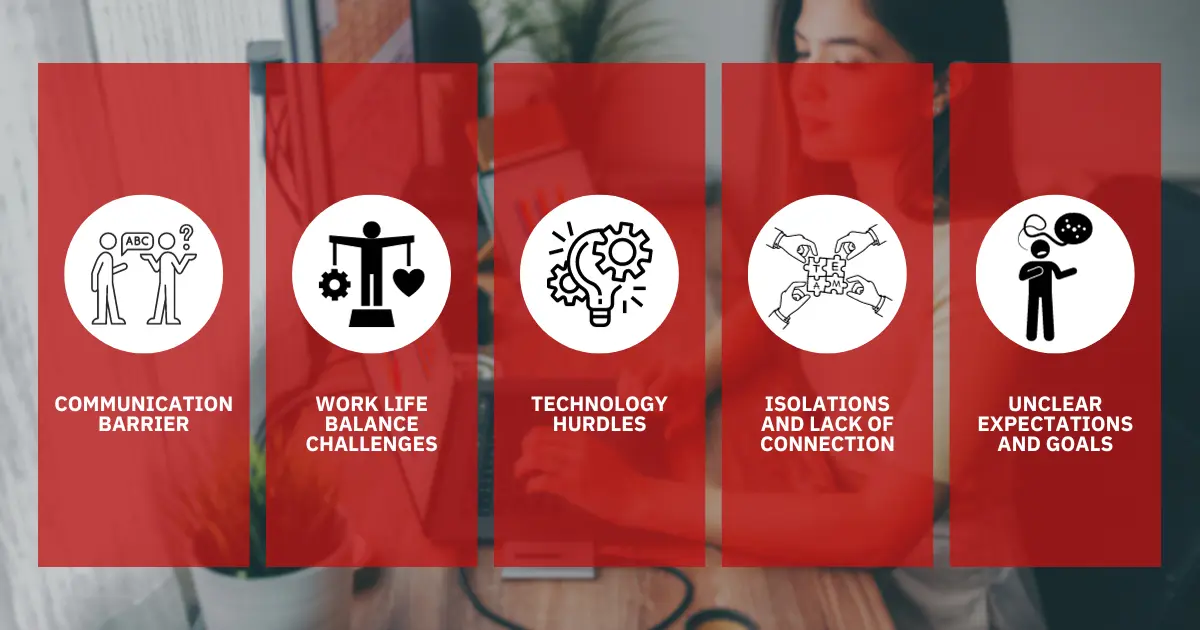Building a Collaborative Culture in the times of Remote culture can be hectic sometimes. So, We welcome our fellow project managers and team leads of any industry to this blog that delves into the dynamic realm of building a collaborative culture in the age of remote work.
In the ever-evolving landscape of virtual teams, fostering collaboration is not just a challenge but a necessity for success. Let’s explore the tools and tactics that can transform your team into a cohesive and productive force.
Understanding the Shift to Remote Work Embracing the Virtual Workspace
A Deloitte report shows that the time spent by managers and employees in collaborative activities has risen by 50% or more in recent years. Which in return shows an effect on the efficiency of the team.
The shift to remote work has transformed the traditional office setting into a virtual workspace. As project managers, we must adapt and leverage this change to build a collaborative culture that thrives in the digital realm.

In the same way, it must also be a new or hard experience even for your team members such as:
- Communication Barriers
- Work-Life Balance Challenges
- Technological Hurdles
- Isolation and Lack of Connection
- Unclear Expectations and Goals
Thus let us go deep into various tools that might help you overcome these Barriers
Tools for Collaboration in the Virtual Space
In the era of remote work, the right tools play a pivotal role in cultivating collaboration within virtual teams. As project managers, we recognize the need for innovative solutions to overcome the challenges of physical separation.
This section delves into essential tools that streamline communication, centralize project management, and elevate document collaboration.

1. Project Management Platforms
Implementing robust project management platforms, such as Asana or Trello, can centralize tasks, deadlines, and communication. These tools provide a shared space for collaboration and streamline project workflows.

2. Communication Tools
Effective communication is the backbone of collaboration. Tools like Slack, Microsoft Teams, or Zoom facilitate real-time communication, making it easier for team members to connect and share ideas irrespective of geographical distances.

3. Cloud-Based Document Collaboration
Utilize platforms like Google Workspace or Microsoft 365 for seamless document collaboration. These tools allow team members to work on the same document simultaneously, fostering a sense of unity and shared progress.
Tactics to Promote Collaboration
- Trust : Trust is the bedrock of any collaborative culture, especially in remote teams. Establishing trust involves open communication, consistency, and reliability.
As a project manager, emphasize the importance of delivering on commitments and encourage team members to communicate openly about challenges. Trust is built over time through shared experiences and demonstrated reliability.
- Autonomy :
Providing team members with autonomy is a catalyst for collaboration. Granting autonomy doesn’t mean a lack of oversight; instead, it empowers individuals to take ownership of their tasks.
Clearly define roles and responsibilities, set expectations, and allow team members the freedom to explore innovative solutions. Autonomy fosters a sense of responsibility and encourages individuals to contribute their unique strengths to the team.
- Motivation :
Motivation is the driving force behind a collaborative and productive team. Recognize and celebrate achievements, both big and small.
As a project manager, understand the individual motivations of team members and align those with project goals. Encourage a positive work environment, provide constructive feedback, and recognize the value each team member brings to the collaborative effort.
- Collaboration:
Collaboration, the very essence of a collaborative culture, requires intentional efforts. Foster an environment where collaboration is not just encouraged but expected. Utilize collaborative tools to facilitate joint problem-solving and idea-sharing.
Establish shared goals and emphasize the collective success of the team. Encourage cross-functional collaboration to harness diverse perspectives and skill sets.
- Communication:
Effective communication is the lifeblood of collaboration in a remote setting. Articulate expectations, project updates, and changes. Foster an open communication culture where team members feel comfortable expressing ideas and concerns. Leverage a combination of synchronous and asynchronous communication tools to accommodate different work styles and time zones. Regularly assess and refine communication strategies to ensure clarity and transparency.
By focusing on these five key elements, You lay the foundation for a robust collaborative culture in your virtual workspace. Here are the 5 Elements.
- Trust,
- Autonomy,
- Motivation,
- Collaboration, and
- Communication
Each element contributes to building a cohesive and high-performing team that can navigate the challenges of remote work with ease.
Tactics to Promote Collaboration
1. Trust
Trust is the bedrock of any collaborative culture, especially in remote teams. Establishing trust involves open communication, consistency, and reliability.
As a project manager, emphasize the importance of delivering on commitments and encourage team members to communicate openly about challenges. Trust is built over time through shared experiences and demonstrated reliability.
2. Autonomy
Providing team members with autonomy is a catalyst for collaboration. Granting autonomy doesn’t mean a lack of oversight; instead, it empowers individuals to take ownership of their tasks.
Clearly define roles and responsibilities, set expectations, and allow team members the freedom to explore innovative solutions.
Autonomy fosters a sense of responsibility and encourages individuals to contribute their unique strengths to the team.
3. Motivation
Motivation is the driving force behind a collaborative and productive team. Recognize and celebrate achievements, both big and small.
As a project manager, understand the individual motivations of team members and align those with project goals.
Encourage a positive work environment, provide constructive feedback, and recognize the value each team member brings to the collaborative effort.
4. Collaboration
Collaboration, the very essence of a collaborative culture, requires intentional efforts. Foster an environment where collaboration is not just encouraged but expected. Utilize collaborative tools to facilitate joint problem-solving and idea-sharing.
Establish shared goals and emphasize the collective success of the team. Encourage cross-functional collaboration to harness diverse perspectives and skill sets.
5. Communication
Effective communication is the lifeblood of collaboration in a remote setting. Articulate expectations, project updates, and changes. Foster an open communication culture where team members feel comfortable expressing ideas and concerns.
Leverage a combination of synchronous and asynchronous communication tools to accommodate different work styles and time zones. Regularly assess and refine communication strategies to ensure clarity and transparency.
By focusing on these five key elements, You lay the foundation for a robust collaborative culture in your virtual workspace. Here are the 5 Elements.
- Trust,
- Autonomy,
- Motivation,
- Collaboration, and
- Communication
Each element contributes to building a cohesive and high-performing team that can navigate the challenges of remote work with ease.
Overcoming Challenges in the Virtual Workspace

Time Zone Management
Acknowledge and address time zone differences by establishing overlapping work hours for essential meetings and fostering a culture of asynchronous communication.

Building Trust Remotely
Building trust can be challenging in a virtual setting. Encourage transparent communication, recognize achievements, and foster a supportive environment to strengthen the team’s trust bonds.
Most Searched Questions on Google.
A1. Establish clear expectations, leverage project management tools, and regularly check in with team members to ensure accountability remains a priority.
A2. Leadership plays a crucial role in setting the tone for collaboration. Leaders should lead by example, communicate effectively, and prioritize team building.
A3. Virtual team-building activities, regular video meetings, and open communication channels are key to maintaining a sense of connection among team members.
Conclusion
In the ever-evolving landscape of remote work, building a collaborative culture is not just a strategy but a necessity. By leveraging the right tools and implementing effective tactics, project managers can guide their teams toward success in the virtual workspace.
Embrace our new software that is best for all the managers who has to work on various works and hard for maintaining a track of records and other ClickUp can give you a great relief – Try our tool for free




